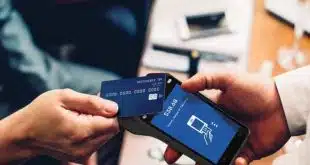Loyalty comes at a hefty price in the payment card world. A Digital Transactions analysis shows Visa Inc. and MasterCard Inc. could spend approximately $6.75 billion on so-called rebates and incentives to card issuers and merchants in 2015, up 15% from $5.86 billion in 2014.
The role financial incentives play in building revenue-generating transaction traffic was highlighted in October when news broke that San Antonio, Texas-based USAA Bank, a MasterCard issuer for three decades, plans to convert its estimated 8 million credit cards and 8.5 million debit cards to the Visa brand in 2016.
“As our primary network, this provides us the opportunity to offer more benefits, including the elimination of foreign transaction fees for all USAA Visa credit cards in 2016,” USAA posted on its Web site.
Neither Visa nor USAA disclosed numbers, but incentives clearly played a role in the switch by one of MasterCard’s biggest issuers.
“We anticipate a step-up in client incentives in fiscal year 2016 based on renewals completed to date and renewals anticipated in 2016, as well as the conversion of USAA and Costco,” chief financial officer Vasant M. Prabhu said Nov. 2 at Visa’s conference call to review financial results for the fourth quarter of fiscal 2015 ended Sept. 30, according to the Seeking Alpha transcript service.
In addition to USAA, Prabhu was referring to another big win for Visa, the pending conversion of Costco Wholesale Corp.’s American Express cobranded card portfolio to the Visa brand, with Citigroup Inc. as issuer, and Visa replacing AmEx as the exclusive general-purpose credit card brand accepted at Costco’s U.S. stores.
At MasterCard’s quarterly earnings call Oct. 29, chief executive Ajay Banga called USAA “a very good client,” according to Seeking Alpha. He added that “we tried our best to pursue that business, but at a point, we lost out. And that’s just the way it is.”
Spokespersons for MasterCard, Visa and USAA did not respond to Digital Transactions’ requests for comment.
The networks report rebates and incentives as contra-revenue items on their earnings statements, meaning they subtract the expense from total revenues from transaction fees, assessments, and other sources. In recent years, the networks have been spending between 15% and 18% of gross revenues on incentives, which rise as revenues rise.
In fiscal 2015, Visa spent $2.86 billion on rebates and incentives, up 10% from $2.59 billion in fiscal 2014. The company’s annual report for fiscal 2014 says Visa had $12.4 billion in incentive commitments due within one year to more than five years out.
MasterCard, the No. 2 network, generally spends more than Visa on incentives and reported $1.02 billion in such expenditures in the third quarter, up 20% from a year earlier. Company statements indicate that for all of 2015, spending will be up by 19% over 2014, to $3.89 billion.
“The incentives are structured to create the highest motivation for the bank and retailer to drive volume through payment cards and especially those issued [on] that particular network,” Gil Luria, managing director at Los Angeles-based Wedbush Securities, says by email. “To that end, these incentives work exceptionally well in creating processing volumes for Visa and MasterCard.”
—Jim Daly





